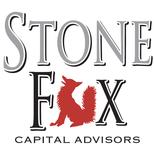 Author: Mark Holder, Stone Fox Capital
Author: Mark Holder, Stone Fox Capital
Covestor model: Net Payout Yields
Disclosure: Long TRV, ACN, LMT, MSFT, GPS, CSCO, MHS, COF, CB, BA
June was a good month for the Net Payout Yields model on a relative basis. The model outperformed the S&P 500 by 0.67%, with a loss of 1.16% versus the 1.83% loss for the benchmark (Covestor calculations). Naturally, on an absolute basis the model had a disappointing month, but it performed as expected by being less volatile than the benchmark and holding up better during the worst parts of the big drop mid-month.
The model remains fully invested with an average weight of only 2% cash for June. The goal of the model is to let the companies themselves buy back stock at the time of any market weakness, rather then trying to time the market myself.
Trades
Only one trade was made during the month. Wells Fargo (NYSE: WFC) was sold as the stock failed to keep the Net Payout Yield at acceptable levels. The stock was replaced in July with Travelers (NYSE: TRV), which has an extremely high NPY due to its consistently large stock buybacks.
Top Performers
Despite the nearly 2% loss in the S&P 500 for June, this model had three stocks with over 4% gains. Accenture (NYSE: ACN) had a great earnings report. Lockheed Martin (NYSE: LMT) had a nice bounce as the market has become more comfortable that defense spending won’t be cut as much as feared. Microsoft (NASDAQ: MSFT) finally got a bounce after lagging for most of the year. (Yahoo Finance)
Bottom Performers
With a weak market, the model had several stocks with big losses for the month. The biggest loser was Cisco Systems (NASDAQ: CSCO), which continues to post disappointing results even as it accumulates cash and ramps up dividends and stock buybacks. Gap (NYSE: GPS), along with CSCO, lost nearly 7% after posting weak results amid cost pressures with increased cost of cotton and higher costs in manufacturing areas in Asia. (Yahoo Finance)
Other weak performers were Medco Health Solutions (NYSE: MHS), Capital One Financial (NYSE: COF), Chubb (NYSE: CB) and Boeing (NYSE: BA) which all lost roughly 5% for the month. BA has been subsequently sold in early July as it’s failed to reinstate a stock buyback program, leaving the NPY below attractive levels. (Yahoo Finance)
Besides BA, all the other companies have significant stock buyback programs that should provide for some downside support during share price weakness. In addition, the buybacks can help provide earnings surprises down the road.
Conclusion
As seen with the May and June results, the model tends to outperform in weak markets. In addition, the higher yields and stock buybacks from these large cap, financially strong companies can allow investors to sleep better at night, knowing that these companies can actually benefit from weakness.
Investors should understand that losses during a market selloff like we’ve seen in the last two months should be expected with this model, but a key to any investment is the ability to bounce back. One of the biggest issues for investors during the financial crisis was that numerous stocks such as Lehman Brothers and other financial institutions simply went out of business or were liquidated at extremely low levels. Investors in those companies lost most of their capital and hence weren’t able to participate in the recovery. These NPY companies may lose share value from time to time, but the model aims to invest in companies that should survive through downturns, and then thrive.

